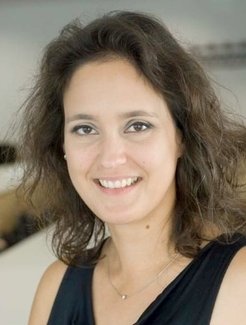Scientist from AEI Hannover pursues research in the field of nonlinear quantum electronics in Australia
Dr. Michèle Heurs, a scientist at the Center for Gravitational Physics in Hannover, as well as an expert in the development and stabilization of highly stable laser systems, left her regular place of work in Hannover at the beginning of October to conduct research at the University of New South Wales in Canberra, Australia, for three months. There she will be working in the area of nonlinear quantum electronics together with her Australian colleagues.

“My reasons for going back to Australia to conduct research are the pleasant working atmosphere and the remarkable productivity of the researchers there. This is a place where world-class scientific results are produced, ones that also benefit the German-British gravitational wave detector GEO600,” says Dr. Heurs.
"We have sent Dr. Heurs to Canberra to deepen the current, very productive collaboration that has existed for many years and to optimally combine the existing knowledge of area specialists,” according to Prof. Dr. Karsten Danzmann, Director of the Institute of Gravitational Physics at the Leibniz Universität Hannover and Max Planck Institute for Gravitational Physics (Albert Einstein Institute/AEI). The scientific and personal collaboration has worked out so well that this year a joint scientific publication has been written and will be published shortly. The stay of Michèle Heurs is being financed both by the AEI, as well as by the host university, which has provided a guest fellowship to the young scientist from Hannover.
The research work of Dr. Heurs is aimed at intensifying the transmission of signals using nonlinear effects, thereby distinguishing them from accompanying noise. More specifically, Michèle Heurs and her Australian colleagues are currently working on the “signal-to-noise ratio by parallelised detection with saturation”. In other words, a useful signal (the subject of the communication) is lost when it is submerged in transmission noise. Ordinary amplifiers affect both the signal and the noise at the same time - at the very best they achieve the so-called “signal-to-noise ratio”. The aforementioned technique acts to elevate the intensity of the signal more than that of the noise: it works based on selective amplification.
In principle, the underlying theory allows this technique to be applied to systems that are only subjected to quantum noise – something that can be very useful for the quantum-optical experiments of gravitational physicists in Hannover. This is to be investigated in Canberra through experiments and theoretical simulations.
Michèle Heurs
Born in Hannover, she graduated from the Leibniz Universität Hannover with a degree in physics. After research stays at the VIRGO Laser Group in Orsay, France and the LIGO Laser Group in Stanford, California, she returned to Hannover to complete her doctoral dissertation at the Leibniz Universität Hannover in 2004. Since 2005 Michèle Heurs has been active as a scientific research assistant at the Center for Gravitational Physics. Her area of specialization is the stabilization of highly stable laser systems for gravitational wave detectors, in particular the GEO600 detector, which is jointly operated by German and British scientists, in Ruthe, near Hannover.
The Center for Gravitational Physics
At the Center for Gravitational Physics, a joint facility of the Max Planck Society and the Leibniz Universität Hannover, experimental research on gravitational waves is being conducted. This includes basic research, as well as applied research in the areas of laser physics, interferometry, vibration isolation, as w0ell as classical optics and quantum optics. Together with the theoretical division of the Max Planck Institute for Gravitational Physics located in the Golm district of Potsdam, we thereby have a centre for gravitational physics in Northern Germany that is unique world-wide in that it covers all aspects of the field.
Together with British research institutes, the Center for Gravitational Physics in Ruthe, near Hannover, operates the GEO600 gravitational wave detector. The scientists of the Institute also play a reading role in LISA (Laser Interferometer Space Antenna), the space-based gravitational wave detector. This joint project of NASA and ESA is designed to detect gravitational waves in space beginning with 2015 onwards and thereby for the first time to “listen” more deeply into the universe than ever before.












